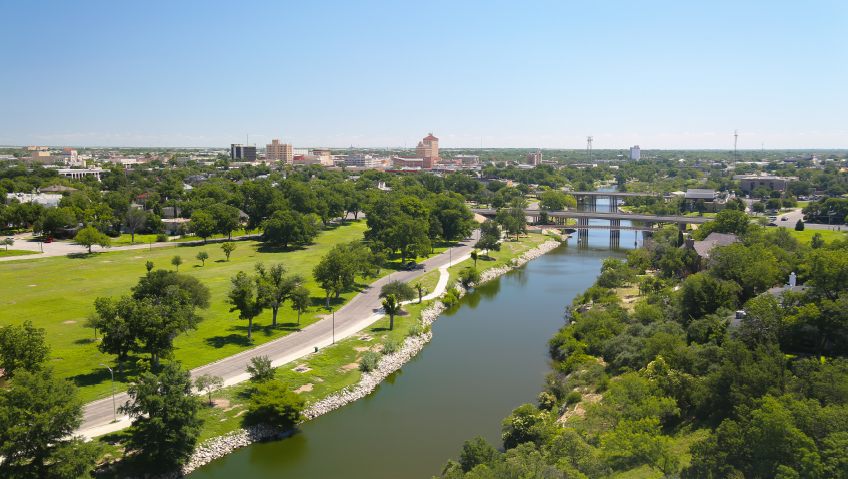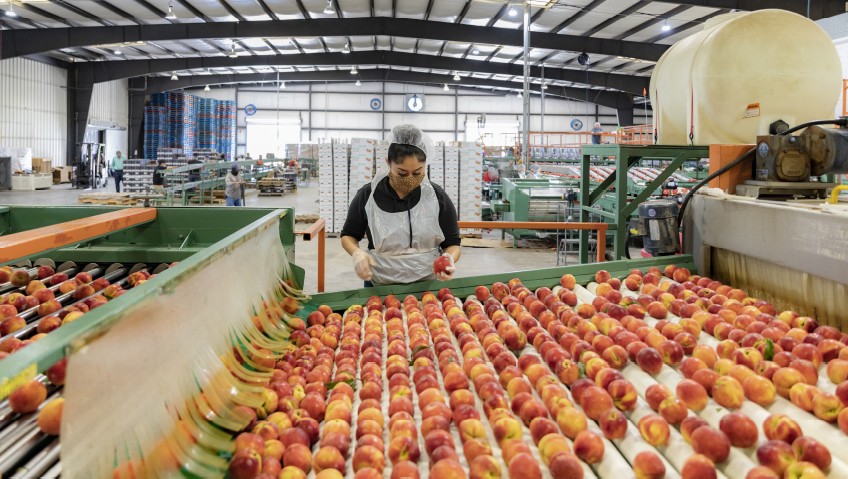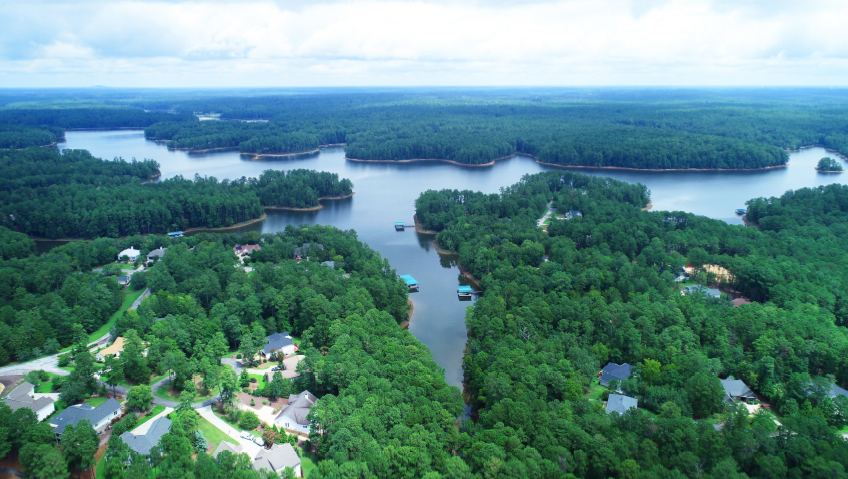Approximately 260 miles (420 kilometers) southwest of Dallas-Fort Worth, the rising metropolis of San Angelo has experienced strong and consistent growth over recent years, thanks to its diverse economy and excellent quality of life. Now, the town is investing heavily in its already strong rail infrastructure to help put the town ‘on the map’ as a host for regional and international business.
Founded as a U.S. Army outpost on the Concho River, San Angelo preserves its military heritage by hosting Goodfellow Air Force Base, which provides training to several military branches. Logistics has long been an important aspect of running military bases and distribution and logistics hubs will prove critical to the effort to onshore American manufacturing.
With a population of just over 100,000, San Angelo boasts a vibrant economy that belies its relatively small size. The town hosts several national and international players in the oil and gas field—San Angelo is a mere one-hour drive time from the Permian Basin—but the effects of changes in oil prices are mitigated by its presence in agriculture, manufacturing, healthcare, retail, and a budding tourism sector.
“We’re a patchwork of a lot of different industries and a lot of different interests,” remarks Chamber of Commerce Chief Executive Officer Walter Koenig.
The town’s Angelo State University, with ten thousand students, offers a pipeline for qualified candidates to San Angelo’s economy, particularly healthcare. The town was recently named among the top four places to start a medical career, according to a LinkedIn survey, and the healthcare sector has helped San Angelo weather the storm of COVID-19.
“Right now, we are enjoying complete freedom and complete openness, because we have had such an efficient management of the pandemic and also a very coordinated recovery,” Koenig says. “That’s owing in a large part to our healthcare system here.”
At first glance, San Angelo appears to be an unlikely candidate for a rapidly growing community. “We are one of the few communities of over 100,000 that is not on an interstate highway,” Koenig says. “That presents both challenges and opportunities to us, as a community.” However, the lack of highway access is softened by Texas’s high speed limits on local roads.
Indeed, it is San Angelo’s prime placement along rail lines, rather than highways, that is helping fuel the town’s recent dramatic expansion. San Angelo is located on the South Orient Rail Line, which runs across the Southwest up into the Plains, connecting Kansas City to the Mexican port of Topolobampo, on the Gulf of California. The line had fallen out of use for over fifteen years after a railroad bridge across the Rio Grande burned down. But now, with the railroad’s revitalization, San Angelo is capitalizing on the new development to raise awareness of the town.
San Angelo occupies a vital junction in this rail line, connecting Mexico’s Ferromex network to the American Union Pacific/BNSF infrastructure. To take advantage of its location, the town is opening a 183-acre rail hub to accommodate the increase in traffic.
“We’re kind of a rail bridge between these two massive networks,” explains Vice President of Economic Development Michael Looney, further explaining that companies are already lining up to reserve space. “On paper, it’s full, and we haven’t even started laying down the track yet.” As a phased project, eighteen thousand feet of track will be laid in July 2021, with cars running by September. Looney predicts the hub will be operating at full capacity by July 2022.
In addition to rail, air travel is also expanding in San Angelo Regional Airport. A new route to Houston, as well as five daily shuttles to the major hub of Dallas-Fort Worth, provides new opportunities for air freight as well as the town’s increasing tourism industry. “We’re well-positioned to take a role as a logistics hub for the region,” Koenig remarks. “San Angelo is particularly well-positioned to take advantage of those trends.”
These logistical developments, plus other advantages such as the Angelo State University’s Small Business Development Center, which helps drive and incubate entrepreneurial ideas, are parts of San Angelo’s pre-emptive approach to economic development. Rather than dangling incentives such as tax breaks, Koenig and his colleagues believe infrastructure development will organically lead to further growth.
“If we have a viable business environment here that continues to get national recognition and we have a lot of success stories in terms of emergent and established businesses, then we will continue to enjoy success,” he says.
It is a gamble that is paying off and will continue to do so. “By building a multimodal, inland, multi-commodity rail port, it automatically attracts companies—companies that we never would have dreamed we’d be talking to,” says Looney.
The approach is greatly accelerating San Angelo’s economic recovery; the town currently reports an unemployment rate of five percent, lower than its pre-COVID average of six percent and significantly lower than the pandemic high of 12 percent. This is due to eliminating barriers, rather than providing incentives—a strategy that Koenig says is endemic statewide. “We get out of your way and let you do your job,” he says.
Of thirty-seven companies that Looney has helped expand, only two have requested formal assistance from the chamber of commerce. “It’s not how much we can give to companies. It’s what we can do to help them find a marketplace that’s durable and stable for their development in our area,” he says.
As part of this development, the San Angelo Chamber of Commerce is creating a new subsidiary body, the San Angelo Regional Manufacturers Alliance (SARMA), to further help area businesses increase their recruitment and develop ongoing relationships with over one hundred companies both in and out of San Angelo itself.
“When you build trust relationships with those companies, and the chamber has an apparatus that focuses on that aspect of our economic ecosystem, they serve as the best ambassadors you can have for the region,” Looney says.
In turn, the chamber of commerce works to recruit suppliers and clients in a symbiotic relationship. Growth is, therefore, mostly secondary, with companies building relationships with other businesses that already do business in San Angelo. Indeed, it was the chamber of commerce and SARMA, rather than the city council, which took the lead in San Angelo’s rail hub project. By demonstrating economic clustering, SARMA further demonstrates how San Angelo takes the initiative in development.
San Angelo is working to capitalize on the onshoring of American manufacturing, increased U.S.-Mexican trade, and the national shift away from crowded cities. Texas is among the fastest-growing states in the Union, and San Angelo anticipates continued growth from this, but the rail hub and the town’s resulting rise in prominence remains its primary goal.
San Angelo is responsibly developing the land necessary to accommodate new residents and businesses. A 2019 comprehensive housing study has spurred a $25 million investment in 249 multi-family homes, funded entirely by local lenders. The town created thirteen total tax increment reinvestment zones (TIRZ) in 2020, generating a $10 million capital investment into land and business development. Additionally, a twenty-one-acre industrial park is currently being developed by client companies, with an additional 118 acres ready for infrastructure development. Upon completion, the land will be fully equipped with water, electricity, natural gas, and fiber optic cables.
Residents appreciate the town’s quality of life. Community musical and art events are helping raise its status as a cultural center, and nearby lakes and state parks provide avenues for outdoor recreation. All of these factors also drive a vibrant and growing tourism industry. “I’ve lived all over the world,” says Koenig, who is himself a former international business executive who has recently returned to the USA to lead the Chamber of Commerce in San Angelo. “I’ve never seen a community that’s more philanthropic or charitable.”
New growth is being matched by new capacity in land development, and there is more to come. San Angelo is working on two new highway interchanges that will connect the town to the Ports-to-Plains Corridor, running vertically from Alberta to Texas, and relieve pressure on the I-35 and I-70 corridors. Legislation is also in the works to connect the town to the planned Gulf Coast Strategic Highway, I-14, which will stretch across Texas, Louisiana, and Alabama.
As San Angelo looks to the future, its status as a ‘Goldilocks community’—not too big, not too small—is a delicate balance carefully maintained by its economic development staff, and its leaders have their work cut out for them.
“We’ve got a unique, very successful story here in San Angelo,” Looney says. “We’re not bored; we’re very busy.”
Koenig agrees, looking back on his long history of travel. “In good times and in times of challenge, there’s nowhere else I’d rather be than San Angelo, Texas.”






